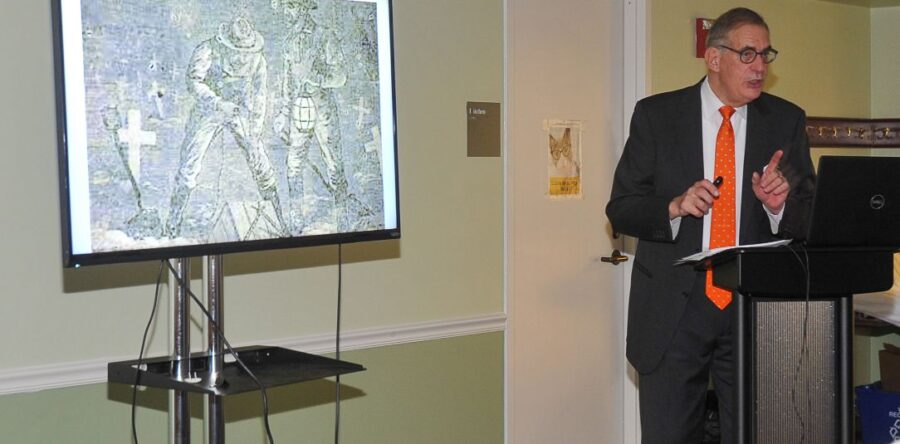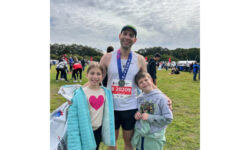By Audrey Anderson
Hometown Weekly Reporter
Appropriate for the Halloween season, a lurid tale of murder at the Harvard Medical School was the subject of "The Disappearance of Dr. Parkman: Blood & Ivy at Harvard," an historical talk given by Retired Massachusetts Superior Court Justice Dennis J. Curran on October 26 at the Medfield Public Library.
According to Justice Curran, Harvard Medical School's reputation in 1849 was sketchy. Rumors flew around about the school's Spunker Club that people suspected of stealing bodies for research purposes. The school was built on the tidal flats in Boston, next to the Massachusetts General Hospital and not far from several state institutions for the poor and infirm. Also, a neighborhood where Irish immigrants lived was situated nearby.
Dr. George Parkman, a wealthy and prominent businessman and doctor, went missing on November 23rd, while making rounds of collections in the city. The Parkman family offered a $3,000 reward for his return, and then ran advertisements in all of the city's newspapers and distributed thousands of handbills about the disappearance. The police searched for Dr. Parkman and received tips on his disappearance from the general public.
As with contemporary trials, minorities in society, in this case Irish immigrants, were incorrectly suspected for the murder, especially due to the proximity of the Irish neighborhood to the Harvard Medical School.
Finally, on November 30, the story broke in the Evening Transcript that Dr. Parkman's body was found at the Harvard Medical School, and his colleague Dr. John W. Webster was charged with the murder. According to the report, the murder occurred during a dispute about a loan payment Dr. Parkman was trying to collect from Dr. Webster.
The public became fascinated with the trial. It was held in a courthouse with room for 100 spectators, but the public filed through, and eventually 60,000 people were present for at least part of the trial. Reporters from Europe flocked to the courthouse.
Importantly, the trial led to several firsts in the history of criminal law. It was the first trial to feature dental forensic evidence and a forensic expert, since Dr. Parkman's dentures were found in the crawl space underneath Dr. Webster's lab, along some other bones. Dr. Parkman's dentist testified that the mold he created for Parkman's dentures matched the dentures found with his remains.
Chief Justice Lemuel Shaw allowed an alibi defense, circumstantial evidence, character evidence, and handwriting experts in the trial.
Justice Shaw developed definitions of murder ("malice or coldblooded desire of revenge") and manslaughter ("heat of blood or violence of anger"), and counseled the jury on the need to be convinced beyond a reasonable doubt, rather than the typical standard of absolute certainty, using a definition that remains the standard today.
To learn more about this fascinating landmark case, Justice Curran recommended the following books:
Collins, Paul. Blood & Ivy: The 1849 Murder that Scandalized Harvard. (New York; W.W. Norton Company, 2018.)
Sullivan, Robert; The Disappearance of Dr. Parkman. (Boston, Little, Brown and Company, 1971.)









